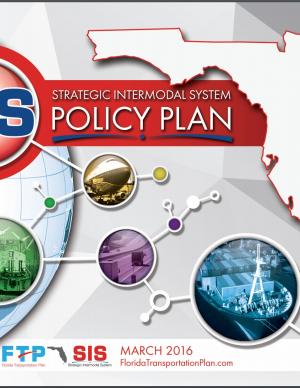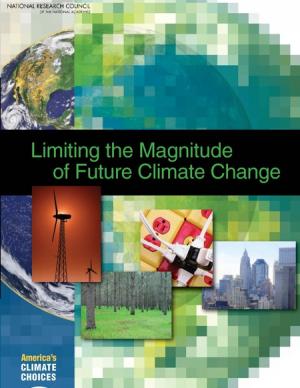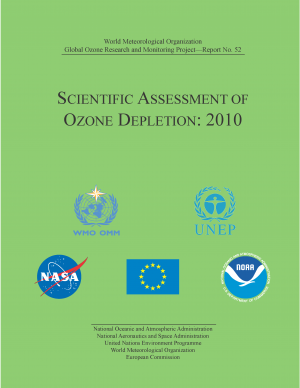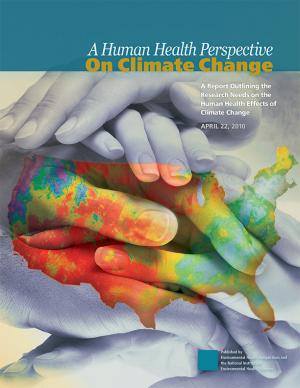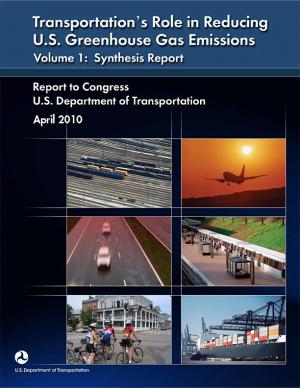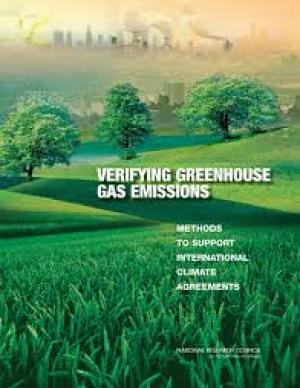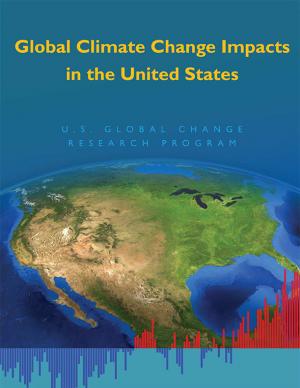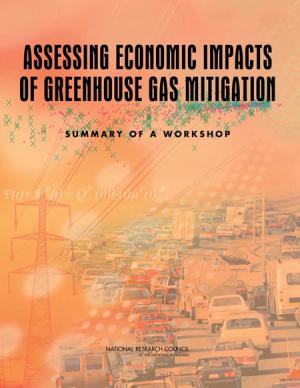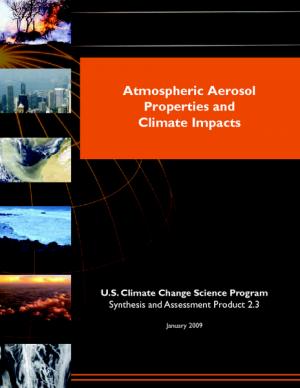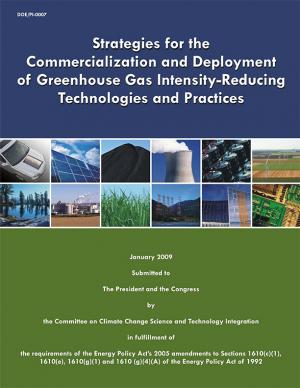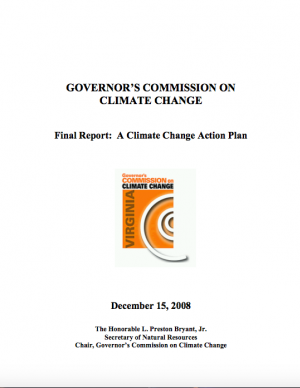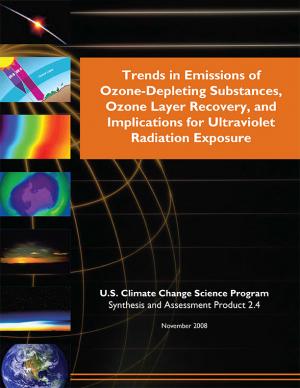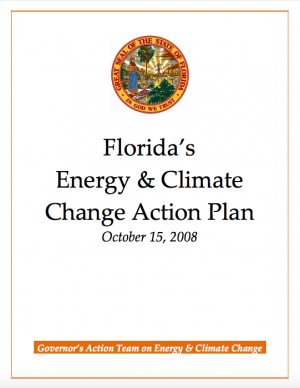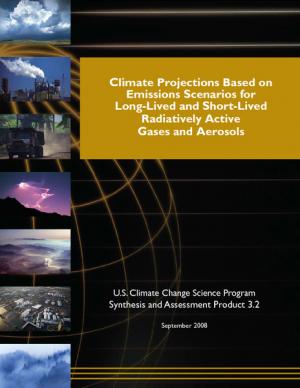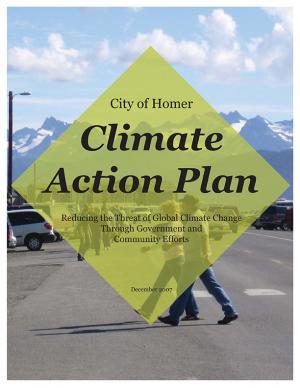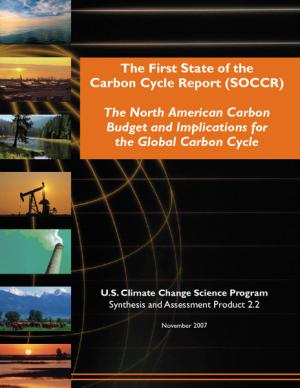Access a range of climate-related reports issued by government agencies and scientific organizations. Browse the reports listed below, or filter by scope, content, or focus in the boxes above. To expand your results, click the Clear Filters link.
The Florida Transportation Plan (FTP) is the statewide long-range transportation plan for all of Florida. It is complemented by this Strategic Intermodal System Policy Plan, which identifies policies for planning and implementing the statewide high-priority network of transportation facilities critical to Florida’s economic competitiveness.
Meeting internationally discussed targets for limiting atmospheric greenhouse gas concentrations and associated increases in global average temperatures will require a major departure from business as usual in how the world uses and produces energy. This report from the America’s Climate Choices suite of studies by the National Research Council recommends that a U.S. policy goal be stated in terms of a budget for cumulative greenhouse gas emissions over the period 2012 to 2050.
In August 2009, New York’s Governor, David Paterson, signed Executive Order 24 establishing a statewide goal of reducing greenhouse gas emissions 80 percent below 1990 levels by 2050. In addition, his Executive Order named the Climate Action Council to determine how to meet the goal. The Climate Action Council was also ordered to develop a plan to increase New York’s resiliency to a rapidly changing climate. This document is the council's interim report on New York's progress toward these goals.
In determining appropriate adaptation strategies, project staff worked with participants to survey a wide range of potential strategy options and develop a process for evaluation and prioritization of targeted strategies.
This assessment of ozone depletion, produced by the World Meteorological Organization and the United Nations Environment Programme every four years since 1985, is the work of over 300 scientists. The 2010 report highlights advances in the understanding of the role greenhouse gases play in ozone alteration. It also includes updated information for policymakers, including ozone projections for the 21st century.
This report quantifies the outcomes of different stabilization targets for greenhouse gas concentrations using analyses and information drawn from the scientific literature. Although it does not recommend or justify any particular stabilization target, it does provide important scientific insights about the relationships among emissions, greenhouse gas concentrations, temperatures, and impacts. The report emphasizes the importance of 21st century choices regarding long-term climate stabilization, and is a useful resource for scientists, educators, and policy makers, among others.
This report, by a federal working group led by the National Institute of Environmental Health Sciences, highlights 11 key categories of diseases and other health consequences that are occurring or will occur due to climate change. The report provides a starting point for coordination of federal research to better understand climate’s impact on human health. The recommendations of the working group include research to identify who will be most vulnerable, and what efforts will be most beneficial.
This report, submitted to the U.S. Congress in April 2010, evaluates a range of strategies for reducing greenhouse gases from transportation, including introducing low-carbon fuels, increasing vehicle fuel economy, improving transportation system efficiency, aligning transportation planning and investments to achieve GHG reduction objectives, and pricing.
Agreements to limit emissions of greenhouse gases are the focus of international negotiations, and with such accords will come the need to accurately estimate these emissions, monitor their changes over time, and verify them with independent data. This report identifies strategic investments that could be made to both improve self-reporting and yield a capability to verify these estimates and reduce uncertainties about emissions to less than 10 percent.
The Alaska Climate Change Sub-Cabinet was established on September 14, 2007, to advise the state's governor on creating a comprehensive Alaska Climate Change Strategy. This document contains the recommendations of the Adaptation Advisory Group, which was charged with evaluating and developing options to adapt to climate change. The report also includes background about projected climate impacts on Alaska.
The state of New Jersey enacted the Global Warming Response Act on July 2007, calling for a reduction in greenhouse gas emissions to 1990 levels by 2020 and further reduction of emissions to 80 percent below 2006 levels by 2050. This report was given to the Governor, Treasurer, and State Legislature in compliance with the Global Warming Response Act.
This document sets forth a plan, required by Hawai'i's 2007 Session Laws, to achieve the maximum practically and technically feasible reductions in greenhouse gas emissions to or below 1990 levels of emissions by 2020.
This report is the Second National Climate Assessment, summarizing the science and impacts of climate change on the United States. The report discusses climate-related impacts for various societal and environmental sectors and regions across the nation. It is an authoritative scientific report written in plain language, with the goal of better informing public and private decision making at all levels.
Reliable estimates of the costs and benefits to the U.S. economy for various emissions reduction and adaptation strategies are critical to federal climate change research and development portfolio planning and investment decisions. At the request of the U.S. Department of Energy, the National Academies organized a workshop to consider these issues. The workshop participants discussed three dimensions: policy, analysis, and economics. They focused on (i) policymakers' informational needs, (ii) models and other analytic approaches to meet these needs, (iii) important economic considerations, including equity and discounting, and (iv) opportunities to enhance analytical capabilities and better inform policy.
King County in Washington State has established a comprehensive program to prepare for climate change, and many of the tools and strategies that King County has employed can be applied in other communities. This memorandum from the King County Office of Strategic Planning and Performance Management, published by the American Planning Association, describes strategies developed in King County to direct local government efforts to address climate change.
The Michigan Climate Action Council (MCAC) was created on November 14, 2007, by Governor Jennifer Granholm. Governor Granholm charged the MCAC with producing a greenhouse gas emissions inventory and forecast, developing this comprehensive Climate Action Plan with recommended greenhouse gas reduction goals and potential actions to mitigate climate change in various sectors of the economy, and advising state and local governments on measures to address climate change.
This Climate Action Plan was developed for New Hampshire by the Climate Change Policy Task Force, initiated by Governor John Lynch in 2008. The plan aims to achieve the greatest feasible reductions in greenhouse gas emissions while also providing the greatest possible long-term economic benefits to New Hampshire.
This Synthesis and Assessment Product (SAP), developed as part of the U.S. Climate Change Science Program, offers a detailed look at global distributions and properties of airborne particles known as "aerosols." The report examines the various ways in which aerosols influence climate, and the uncertainties in our ability to observe and measure these particles' impact on the climate system.
This report systematically examines the market readiness of key technologies important to meeting climate change mitigation goals and assesses the barriers and business risks impeding their progress and greater market application. The report was sponsored by the U.S. Climate Change Technology Program, a multi-agency group led by the U.S. Department of Energy.
This report presents the projected impacts of climate change on the Rogue River Basin of southwest Oregon.
The Action Plan describes climate effects on the built environment, natural systems, and human health in Virginia and sets forth a comprehensive set of recommendations for reducing greenhouse gases.
In 2008, the Iowa General Assembly created the Iowa Climate Change Advisory Council (ICCAC), consisting of 23 voting members appointed by the state's governor. The ICCAC was tasked with developing a greenhouse gas emission reduction proposal to the governor and the general assembly. This document is the council's final report.
This Synthesis and Assessment Product, developed as part of the U.S. Climate Change Science Program, integrates knowledge of the stratospheric ozone layer, human-emitted ozone-depleting substances, and the amount of harmful ultraviolet radiation reaching Earth's surface.
This plan contains 50 separate policy recommendations to reduce harmful greenhouse gas emissions. The report estimates that if all its recommendations were implemented, the state would meet its emissions reduction targets, enjoy increased energy security, and see a net cost savings of more than $28 billion from 2009 to 2025.
Governor Mike Beebe established the Governor’s Commission on Global Warming, representing a wide diversity of views with members from business, industry, environmental groups, and academia. The commission was charged with moving Arkansas in the right direction to start stabilizing global climate, allow Arkansas to lead the nation in attracting clean and renewable energy industries, and to reduce consumer energy dependence on current carbon-generating technologies and expenditures. This document is the commission's final report.
In 2002, North Carolina's Governor Hunt signed the Clean Smokestack Act, which tasked the North Carolina Department of Environment and Natural Resources’ Division of Air Quality with studying options for reducing carbon dioxide emissions from coal-burning power plans and other sources. This report provides the Division's recommended mitigation options for reducing North Carolina’s carbon emissions.
This Synthesis and Assessment Product, developed as part of the U.S. Climate Change Science Program, is an assessment of the effects of short-lived gases and particles in the atmosphere, which can significantly change regional surface temperatures. By the year 2100, short-lived gases and particles may account for as much as 40 percent of the warming over the continental U.S. in summertime.
The Global Warming Task Force was created by Wisconsin Governor Jim Doyle in April 2007. The Task Force created this report, which contains its policy recommendations to reduce greenhouse gas emissions in Wisconsin, as well as its short- and long-term goals for reducing greenhouse gas emissions in the state.
In February of 2007, Governor Sanford of South Carolina established the Governor’s Climate, Energy, and Commerce Committee to develop a Climate, Energy, and Commerce Action Plan containing specific recommended actions for mitigating greenhouse gas emissions. This document is the committee's action plan, which documents its recommendations and associated analyses to reduce greenhouse gas emissions and enhance energy and economic policy in South Carolina by 2020 and beyond.
Ted Kulongoski, Governor of Oregon from 2003–2011, selected the Climate Change Integration Group (CCIG) to develop a framework for making informed decisions to minimize the more extreme impacts of climate change. Kulongoski wanted the CCIG to create a strategy for Oregon to apply the measures from the 2004 Oregon Strategy for Greenhouse Gas Reductions. In this report, the CCIG proposes that Oregon takes steps toward developing a framework that will assist individuals, businesses, and governments to incorporate climate change into their planning processes.
Vermont's Governor James Douglas established the Governor’s Commission on Climate Change by executive order on December 5, 2005. The state's goal, as outlined in this document, is to reduce its greenhouse gas emissions by 25 percent from 1990 levels by 2012, 50 percent by 2028, and 75 percent by 2050.
In 2007, Nevada's Governor Jim Gibbons signed an executive order that created the Nevada Climate Change Advisory Committee. The order directed the committee to propose recommendations to further reduce greenhouse gas emissions in Nevada, and tasked it with writing this three-part report highlighting the potential impacts, accomplishments, and recommendations to address the issue of climate change in Nevada.
In 2006, Minnesota Governor Tim Pawlenty announced the “Next Generation Energy Initiative,” which included the “development of a comprehensive plan to reduce Minnesota’s emissions of greenhouse gases.” During this announcement, the governor requested that the Center for Climate Strategies help in the development of Minnesota's Climate Mitigation Action Plan and the formation of the Minnesota Climate Change Advisory Group. The Climate Change Advisory Group, which was tasked with developing a comprehensive set of state-level policy recommendations to the governor, produced this report.
This plan—the first in Alaska—was developed by Homer's Global Warming Task Force and includes an inventory of greenhouse gas emissions from city facilities and community-wide, sets targets for reduction, and presents strategies for reducing emissions.
This Synthesis and Assessment Product from the U.S. Climate Change Science Program provides a synthesis of the then-current knowledge of North America's carbon budget and its context within the global carbon cycle. The report provides scientific information for decision support focused on key issues for carbon management and policy.
The Montana Climate Change Advisory Committee, established by the state's Department of Environmental Quality, evaluated greenhouse gas reduction opportunities in various places in Montana’s economy. The committee agreed upon the 54 policy recommendations described in this Climate Change Action Plan, designed to help reduce Montana’s emissions of heat-trapping greenhouse gases to 1990 levels by the year 2020.

